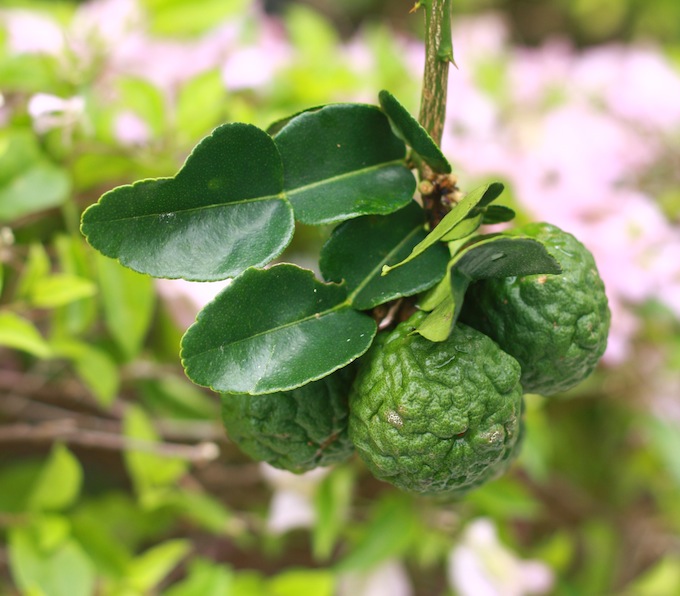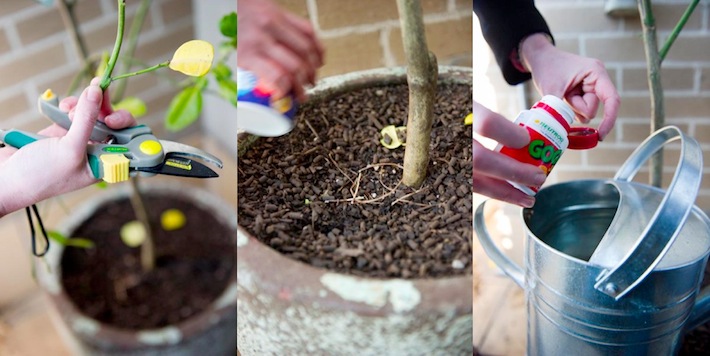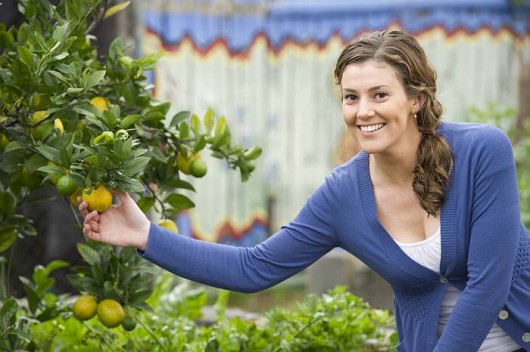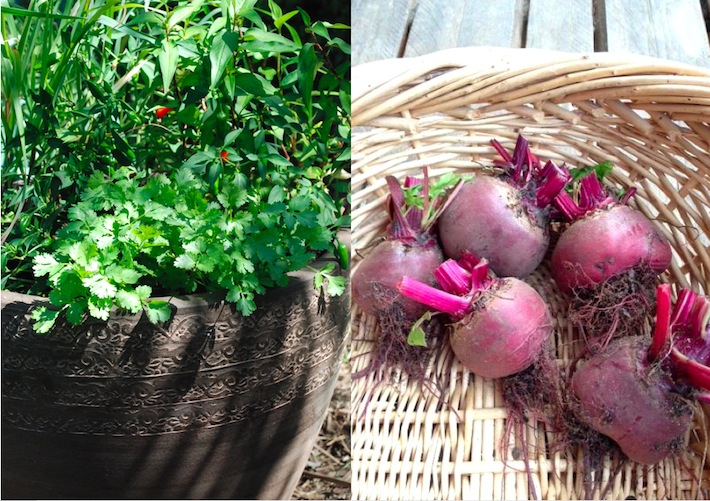It’s spring time. Finally. You’re ready for your first trip to the nursery to pick out what to plant in your garden or in the empty pots in your house. Maybe a few vegetables like peppers, radishes, green beans, and tomatoes; some herbs like basil, parsley, and cilantro; and a common houseplant like Boston fern, Chinese evergreen, snake plant, or spider plant.
What about something exotic; something tropical this year? How about a Southeast Asian citrus tree? A Kaffir Lime Tree.
Why a Kaffir Lime Tree, and not a more common citrus tree like Meyer lemon, Persian lime, Key lime or Nagami kumquat?
Because even if the kaffir lime tree doesn’t produce any fruits, you still have an endless supply of edible kaffir lime leaves to cook with, or slice and eat fresh!
Regular pruning (not plucking) of the leaves will not only improve your meals, but will also prevent the tree from growing more than a few feet high. And if well looked after, the tree will continually re-grow the leaves you removed.
Kaffir lime trees (Citrus hystrix) are available in nurseries around the world because with the right care – lots of light, water, food, and warmth – they can grow anywhere.
The small tree can thrive indoors year-round in a well ventilated pot with good drainage. Kaffir lime trees like to get their feet wet, but not soaked since they are prone to root rot. Therefore, to prevent overwatering, and to give the roots time to breathe, allow the top layer of soil dry out between waterings (poke your finger in the soil to test). It’s also good to mimic the humid conditions of Southeast Asia, so when watering, give the leaves a good misting too.
The trees love light, so if kept indoors, they need to be placed near a sunny window, or tricked with some artificial light on those especially short, winter days. In the summer months, when the temperature is consistently above 60F, kaffir lime trees can be kept outdoors on the patio to flourish in the hot sun.
Kaffir lime trees also need food, and a touch of tender care, in order to grow into a healthy, productive plant. So before you go and buy one, you need to hear from an expert; someone who has Bean There Dug That...
Chloe Thomson – one of the featured presenters on Channel Nine’s The Garden Gurus in Australia – is also the passionate gardening expert behind the blog, Bean There Dug That. A blog “designed to give you fast, easy to follow and relevant gardening advice.” And to convince us all that “Gardening isn’t just for grannies!”
Chloe has specific experience with kaffir lime trees, having already saved her friend’s tree from the brink with a simple three step process. A story she shares on Bean There Dug That, along with many helpful tips for anyone ready to take a kaffir lime tree home. And whether your home is a farm, a house in the suburbs, or even a small apartment, Chloe has experience gardening in them all, and is happy to share her knowledge on how best to care for your tree, and many of your other plants, to encourage sustainable gardening no matter where you live.
An unhealthy Kaffir Lime Tree with yellowing leaves
Head over to Bean There Dug That to learn more, and if you have a plant on the brink this spring or summer, just ask Chloe. Australia might be heading into winter soon, but gardening is always fresh on her mind.
Before & After - With a little TLC from Chloe, a recovering Kaffir Lime Tree on the right with new leaves sprouting up.
{ Images courtesy of Bean There Dug That. Thanks Chloe! }










